Hello! Welcome to my History blog.
About me
My name is Nayyan Diaz, but you knew that already. I am a history major at the University of North Georgia and, more importantly, a history enthusiast.
Spending my time reading documents and examining primary sources sounds fun, but no one wants to hear about it!
My mom tells me that I need to make more friends instead.
I figured that if no one in person would listen, I’d just yell it into the void of the internet.
Being 20 and obsessed with learning about "the before times" is really tough, I know.
...
Introduction
Imagine it’s 1919. You’re a young woman in your early twenties, dressed in your best for a night out after work. You’ve spent your entire day painting delicate numbers on wristwatches that glow in the dark! That is all thanks to a brand-new technology called luminous paint. It’s good money, better than what most women can earn, and your boss tells you it’s completely safe.
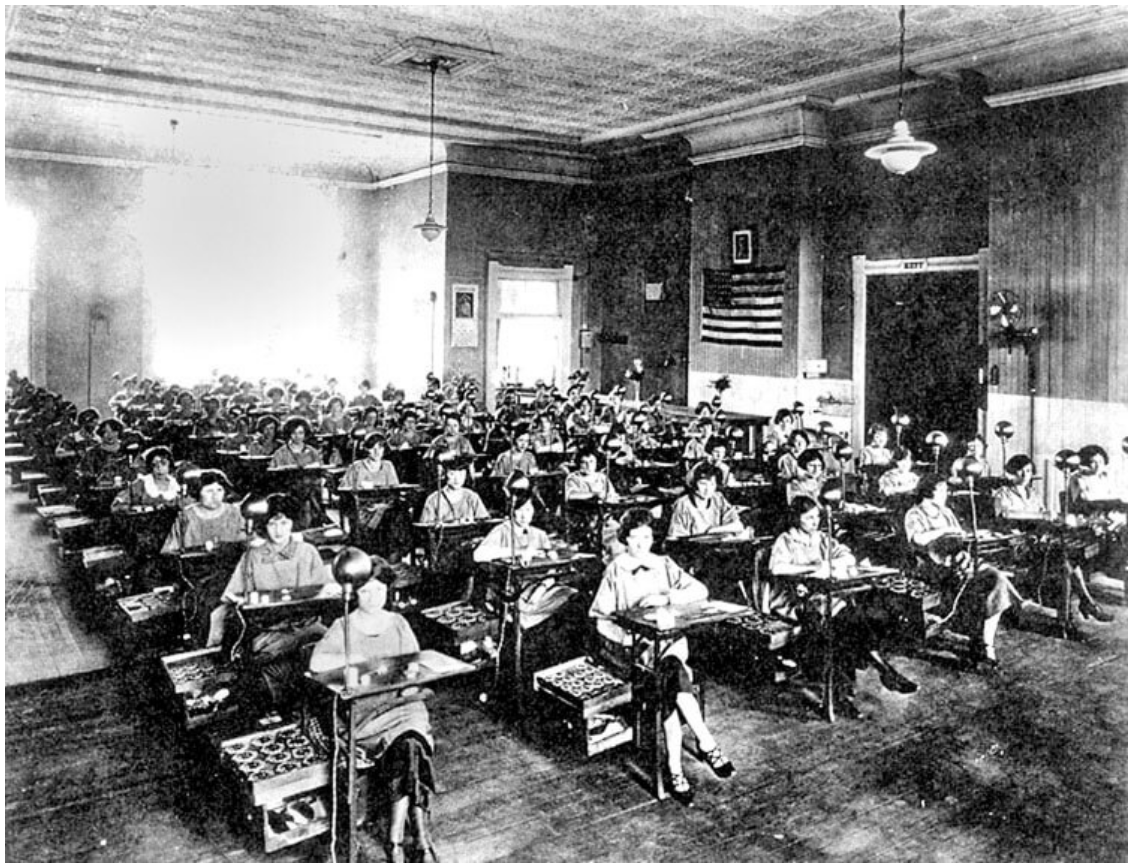
Radium is known for its positive effect on health, and you’re practically in a radium spa all day long! But when the lights go out, something strange happens. Your bones, beneath your skin, and your dress glow in the dark just like the watches. You giggle, of course, with your friends as you literally light up the dark room. Still, you don’t know that this glow is only the beginning of a tragedy that will follow you for the rest of your life and eventually lead to the corporation employing you barely yielding to pressure. This is the story of the Radium Girls. A group of factory workers who stood up to powerful companies after being poisoned by the very substance that made them shine.
Problems in the factory
Radium was known at the time to be very beneficial; it does not take much searching to find results for the “1920s radium fad.” People observed that it could be used to cure cancer and mistakenly thought it could cure a myriad of other diseases. There were anti-aging radium creams, radium toothpaste, radium cosmetics, and radium water.
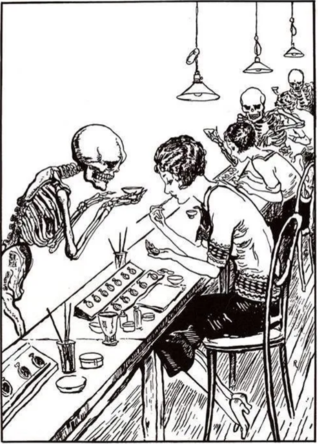
These glowing dials were only a part of this craze. When a woman was first hired, she had to learn to paint the thin lines on the watches. Still, her brush would never have enough of a fine tip, so they were trained to make the point with their lips, dip the brush lightly, and then paint, repeating for their entire shift. Every time they pressed the brush to their lips, they ingested radioactive material. Still, they were quickly assured that it was totally safe and healthy. Women were allowed to eat at their stations, without even needing to wash their hands, and, for fun, there are records of them painting their nails, teeth, and faces with the paint.
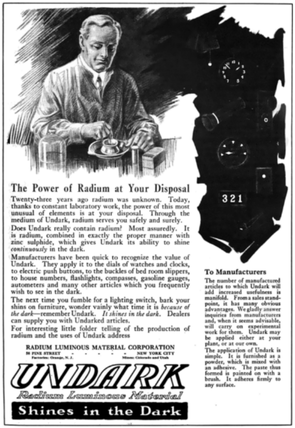
The women quickly became aware of their deteriorating conditions. Still, any advances in understanding of radium were covered, and the health conditions of the women were attributed to diseases like syphilis, smearing their reputations. The first medical professionals to see this radiation poisoning were the dentist, who makes sense, radium is similar to calcium and as such gets absorbed into the bones, weakening them. The jaw was one of the first signs of the poisoning. Dental pain and loose teeth were common, and in 1923, the first dial painter died. “At the end of her life, Mollie’s dentists merely lifted her jaw from her mouth to remove it.”
Fight for Justice
Grace Fryer was one of the women who were afflicted, but she decided to get together with others and take action; along with 4 other women who worked in the plant —Edna Hussman, Katherine Schaub, Quinita McDonald, and Albina Larice —she sued the United States Radium Corporation. She was the third to die, and all their deaths are effects of the dial painting in their early years. Her court case was settled in 1928, but by that time, she needed a back brace to walk. Two of the four other women were bedridden, and the settlement couldn’t do much for their health except ease the minds of their families.
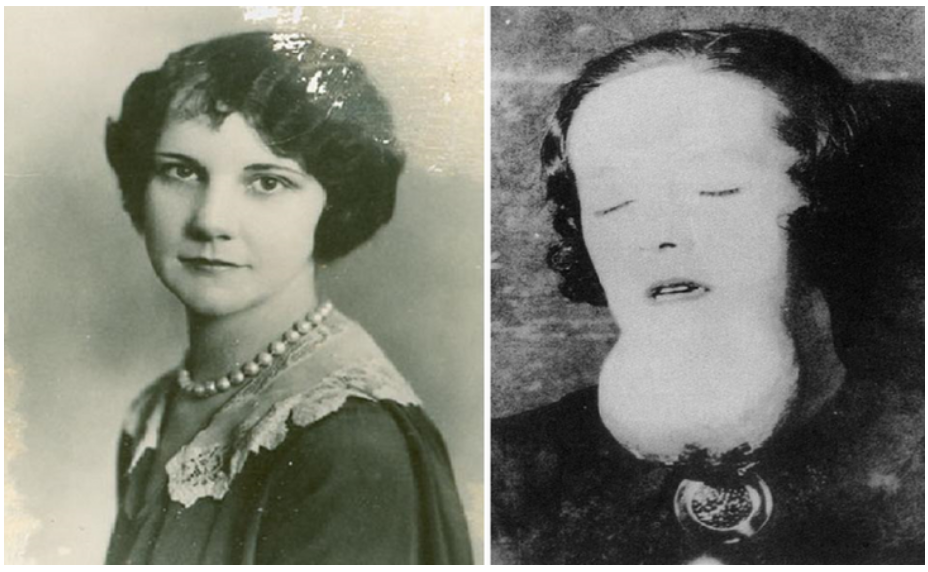
Grace Fryer before and after
A New York Times article from that time states that “Each plaintiff received $10,000, a $600 annuity and a guarantee of all medical expenses.” However, very few of these annual payments went through due to the horrible conditions the self-coined radium girls were in. Despite the radium girls not reaping many of the rewards they fought for, their tale serves as both a warning and a precedent. This case was “one of the first instances of workers receiving compensation for a disease developed because of their occupation.” The warning is for ordinary people: things can go wrong in an occupational setting, but you can fight for your safety. These women may have been fighting just for compensation at first, but their fight continued and eventually led to the creation of the Occupational Safety and Health Administration, or OSHA for short.Unheard voices
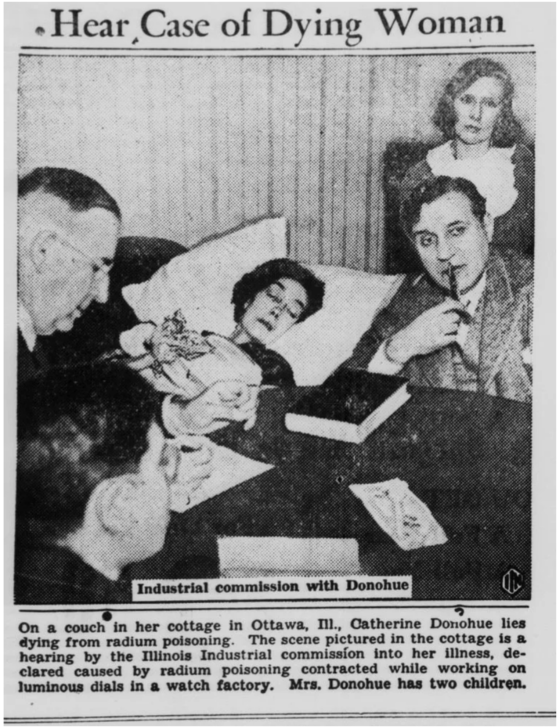 Of course, the radium girls were very public about the matter, with coverage in multiple newspapers. Still, not every factory worker got that chance, there were thousands of factory workers in the early 1900s whose voices went unheard, and despite the company releasing a statement claiming their employing of these women was a philanthropic act, “What was then considered an act of kindness on our part has since been turned against us.” the evidence of them clearly knowing the effects of radium poisoning from the start was clear as they had their scientists supplied with protective measures that these women lacked.
Of course, the radium girls were very public about the matter, with coverage in multiple newspapers. Still, not every factory worker got that chance, there were thousands of factory workers in the early 1900s whose voices went unheard, and despite the company releasing a statement claiming their employing of these women was a philanthropic act, “What was then considered an act of kindness on our part has since been turned against us.” the evidence of them clearly knowing the effects of radium poisoning from the start was clear as they had their scientists supplied with protective measures that these women lacked.
Sources
Physics, Versant. n.d. “Radium Girls Archives.” Versant Medical Physics and Radiation Safety. https://www.versantphysics.com/
category/radiation-safety/radium-girls/.
“PRESERVATION SNAPSHOT PRESERVATION SNAPSHOT PRESERVATION SNAPSHOT Radium Girls the Story of US Radium’s Superfund Site.” n.d. https://www.nj.gov/dep/hpo/1i
dentify/nrsr_19_Mar_Radium_gi
rls.pdf.
The New York Times. 1933. “22D WORKER DIES of RADIUM POISON; Woman Became III 14 Years Ago Painting Watch Dials in New Jersey Plant. DOOMED, STAYED on JOB Affliction Forced Her to Wear a Brace -- One of Five Who Got Damages.,” October 28, 1933. https://www.nytimes.com/1933/
10/28/archives/22d-worker-dies-of-radium-poison-woman-became-iii-14-years-ago.html.
History with Nayyan
This website was made for fun, we do posts, that’s it. I am aware that blogs tend to have more than one post. If that is what you're looking for, you're in the wrong spot.
Sorry
Media
Radium Girls School Play
Radium Girls book
https://www.amazon.com/Radium-Girls-Story-Americas-Shining/dp/149264935X
Radium Girls website
https://www.theradiumgirls.com/
the-girls
...